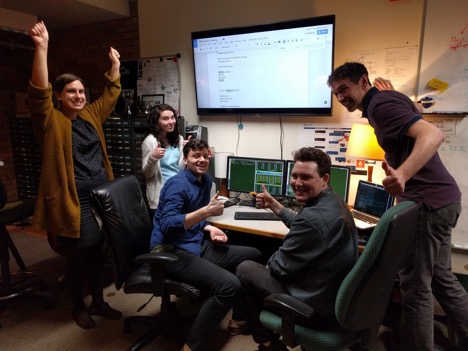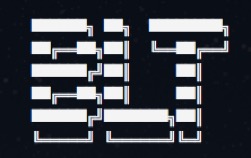main content Bringing a High-Performance “BLT” to Life
Lewis & Clark’s high-performance computing (HPC) system has been propelled by a collaborative initiative driven by professors, staff members, and students. Although many are unaware of this HPC system—named BLT for its worker nodes “bacon, lettuce, and tomato”—it is paving the way for current and future research opportunities.

by Franchesca Schrambling BA ’22
Lewis & Clark is discovering an array of uses for high-performance computing (HPC), such as in the Australia overseas program’s class on venom biology, in computer science courses in artificial intelligence, parallelism, and cybersecurity, and in applications of computational physics.
Several years ago, the college found itself in need of a “big computer” to process the enormous data set required by a bioinformatics-based senior thesis. Although HPC—in which supercomputers or parallel processing techniques are used to solve computational problems and process data—would normally not be available at an institution the size of Lewis & Clark, a team of representatives from the departments of biology and computer science plus Watzek Library and Information Technology began tackling the problem.
“Undergraduates usually don’t get the chance to work on stuff like this,” says Benjamin Glick BA ’20, a computer science and mathematics and physics double major from Chicago. “L&C, despite not being a ‘research institution,’ is a great place for inquiry.”
Glick says he’s been passionate about computers since childhood. While still in high school, he worked with the Computation Institute at the University of Chicago. The experience opened his eyes to the potential of high-performance computers. “The Computation Institute exposed me to a side of computer science that I was really interested in—taking a computer and using it to solve problems.”
The HPC initiative started small but has grown with the help of many, including Glick. He became involved in the project when he met Professor of Computer Science Jens Mache.

“Ben has been the best undergraduate researcher I have worked with over the last 20 years,” said Mache. “He was invaluable in kick-starting our HPC initiative and providing opportunities for cross-disciplinary research, and his maturity, dependability, energy, and dedication are impressive.”

Glick hopes to continue working in the high-demand field. His research ultimately gives others the chance to do more computational research. Whether through classroom usage or research projects on campus, there are many innovative ways BLT can be used in education and in everyday life, once introduced to students.
More Stories

New Leadership
Andrew Saultz Selected Dean of the Graduate School
Andrew Saultz, an alumnus of L&C’s Master of Arts in Teaching program, begins his tenure on August 4.

Stronger Together
Lewis & Clark and Albina Vision Trust Launch Historic Partnership
The new collaboration will build a hub for education and economic opportunity within Portland’s redeveloped Lower Albina district to foster learning as a core value of the community and provide opportunities for Albina residents and Lewis & Clark students, staff, and faculty.

Big Winners
Speech and Debate Shines at National Tournaments
Lewis & Clark’s speech and debate program won a pair of championships at recent national tournaments. The team of Maltin Tocani BA ’25 and Isabella Moore BA ’26 won the Honors division at the YODL national British Parliamentary debate championships, while the Lewis & Clark contingent at the National Speech Tournament won the team title in the limited entry category.

Season Turnaround
Nothing But Net—and Heart
Just one year after finishing dead last in the Northwest Conference, Lewis & Clark men’s basketball shocked the league with a championship run for the record books. Their grit and belief carried them all the way to the NCAA Division III National Tournament for the first time in over 20 years.
